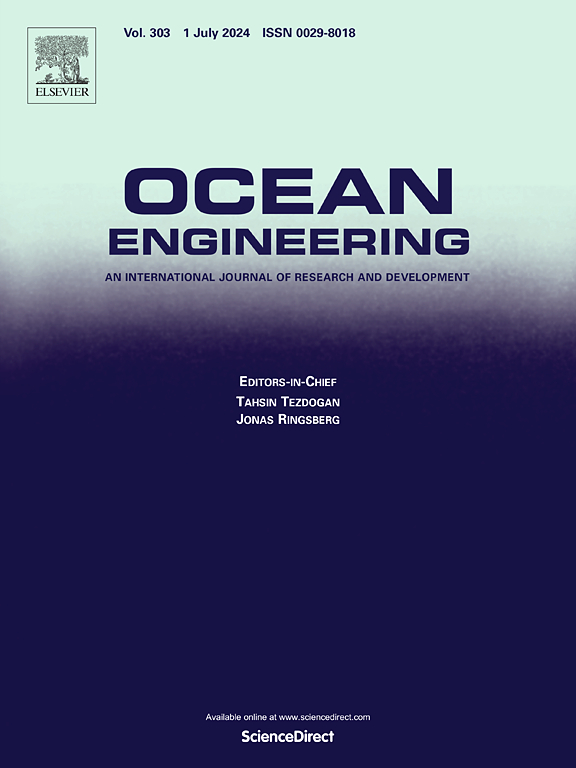A structural design method based on topology optimization and approximate model for the pressure hull of underwater gliders
IF 4.6
2区 工程技术
Q1 ENGINEERING, CIVIL
引用次数: 0
Abstract
The underwater glider is one of the most promising autonomous underwater vehicles for long-term ocean observations, whose energy carrying capacity and energy consumption are directly affected by compressibility and mass of the pressure hull. Therefore, this study proposes a design method for the pressure hull of underwater gliders based on topology optimization and approximate model to further increase its compressibility and decrease the mass. Topology optimization design of the pressure hull is realized with the variable density method, and an approximate model of mass and other output responses of the hull is established by the response surface method, which is used to optimize design variables and thus obtain an optimal pressure hull. The proposed design method is applied to optimize the pressure hull of the Petrel-L glider, and verification tests are performed. According to the test results, the deformation of the optimal pressure hull is increased by 39.7 %, which can indirectly reduce the energy consumption of the buoyancy drive unit and improve endurance of Petrel-L. Meanwhile, the mass of the optimal hull is decreased by 12.8 %, increasing the loading capacity of the vehicle under the same pressure. The proposed design method also provides a promising direction for optimizing the pressure hulls of other underwater vehicles.
求助全文
约1分钟内获得全文
求助全文
来源期刊

Ocean Engineering
工程技术-工程:大洋
CiteScore
7.30
自引率
34.00%
发文量
2379
审稿时长
8.1 months
期刊介绍:
Ocean Engineering provides a medium for the publication of original research and development work in the field of ocean engineering. Ocean Engineering seeks papers in the following topics.
 求助内容:
求助内容: 应助结果提醒方式:
应助结果提醒方式:


